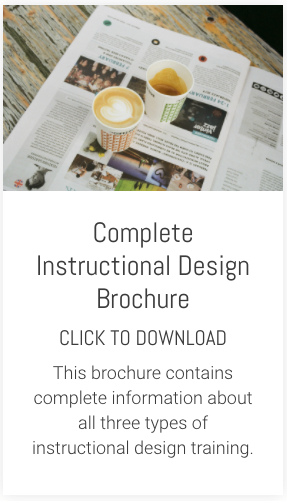If you're a fan of this award-winning series, you'll have followed Walter White's epic journey from high school chemistry teacher to creepy drug kingpin who 'cooks' the best crystal meth known to mankind. The creator of the series Vince Gilligan describes this as a journey from 'Mr Chips to Scarface'.
I've been a fan from the very first episode. And I'm sure, fellow fanatics reading this, can't wait to discover how the series finally twists and turns to its conclusion.
If you've never even heard of Breaking Bad and you enjoy quality TV drama, then I'd encourage you to check it out. I'm pretty sure you won't be disappointed.
And if you are already wondering what on earth any of this has to do with e-learning and instructional design, then let me explain.
Like any good Breaking Bad fan, while I was watching the last batch of episodes on DVD, I just had to look at all the special features, too. The first one that caught my eye was called The Writer's Room.
And how interesting it turned out to be. Apparently, on average, it takes a team of writers around three weeks to hatch an episode of this series.
I'll just repeat that, in case it didn't sink it the first time. It takes approximately 8 people, 3 weeks to come up with just the outline for 45-50 minutes of television drama.
The actual writing of that episode takes another 7 days or so. And the filming of the episode takes about 15 days.
I have no idea how this compares to other TV series, but it really highlights how creating a quality product is a major task.
But most striking of all? The three weeks it takes to work out what is going to happen in the episode. And this is just working out the plot. Satisfying yourself that you are creating credible actions and reactions for the various characters involved.
Of course, I couldn't help but draw some comparisons with how people typically go about creating a piece of e-learning.
For a single episode of Breaking Bad, in very rough percentage terms, that three weeks of creating the plot ( effectively the instructional design equivalent of analysis and design) accounts for about 45% of the total development time. That's pretty astonishing.
Try selling that percentage of analysis and design time to an e-learning client, internal or external. Chances are you'll be laughed out of the room.
Very few people would be happy to accept that percentage of a project's time devoted to analysis and design.
Of course, plotting out a TV series is not the same as doing the analysis and design for a piece of e-learning. For e-learning, you probably don't need 45% of the time devoted to these activities. But you could comfortably spend quite a bit more time on this stage, percentage-wise, than most people usually do.
So often, skipping over the analysis and design is the norm. Everyone would much rather skip over that and go straight to development.
Which is strange. Because as consumers of TV drama, we all know a poorly plotted film with a crumby script that rushes to production is a disaster. Yet we are quite happy to live with a poorly designed, badly scripted piece of e-learning that gets rushed to development. With predictable results.
As I wrote last week, as long as we allow authoring tools to frame the e-learning development conversation (and process) we are in trouble. With this approach and mindset, we will be turning out the e-learning equivalent of B-movies or a TV series destined for the afternoon schedules. And we know how embarrassingly bad most of those end-products are.
For the minority, who are willing to get deadly serious about the analysis and design of their e-learning, popular, performance-improving courses are the gratifying end result.
With just a small shift in thinking and approach, more Breaking Bad quality e-learning is perfectly achievable for a lot more people.
If creating great e-learning is currently top of mind for you and you'd like to get a sense of how your e-learning stacks up against some best practices, then take a couple of minutes to complete our Discover Your E-Learning Impact scorecard to find out how you are doing.







